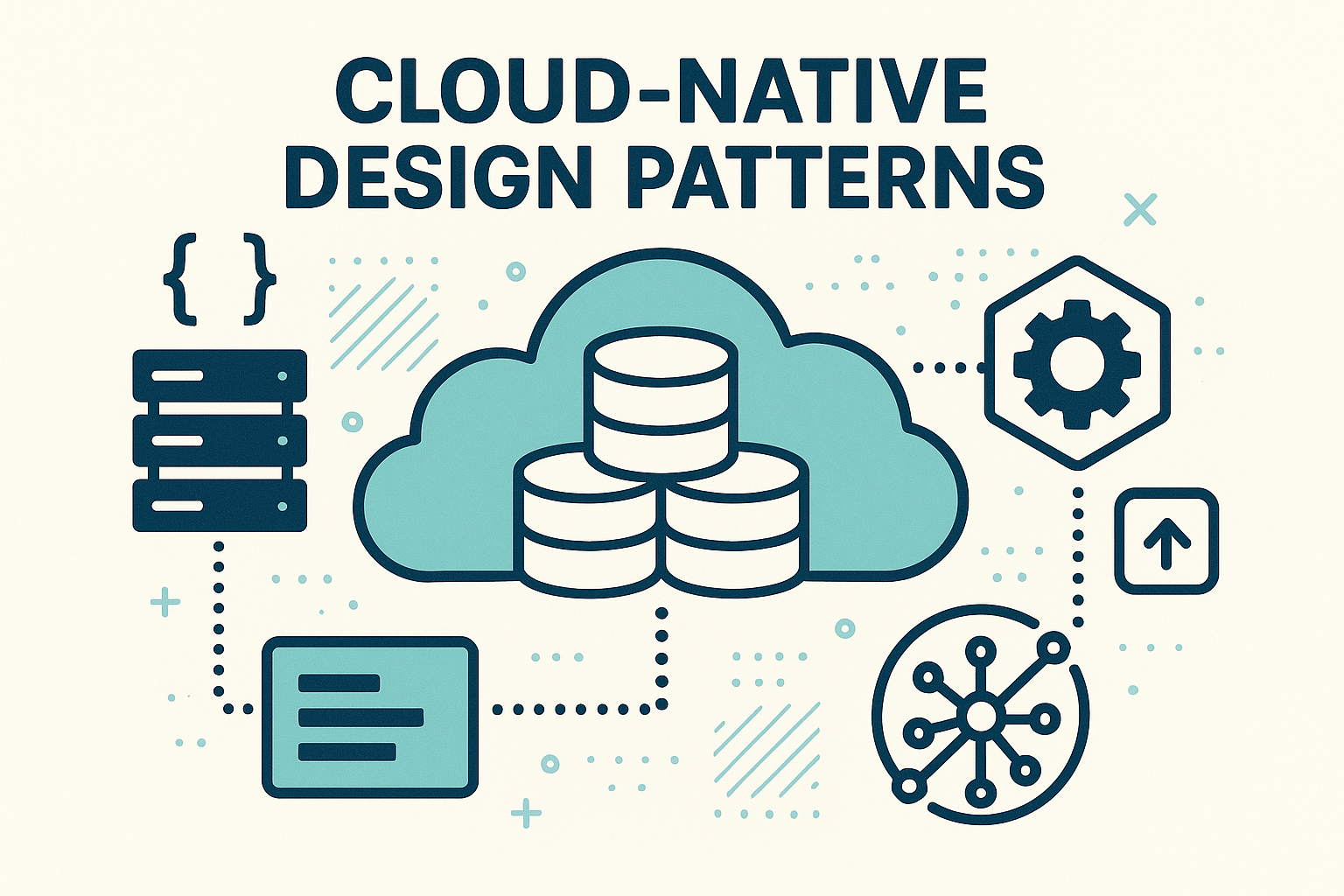Have you ever watched your application buckle under sudden traffic or scramble to keep up with feature requests? I certainly have—picture a weekend sale where your e-commerce site blinks out like a deer in headlights. That’s when I discovered cloud-native design patterns: battle-tested solutions that help your microservices stay resilient, scalable, and maintainable in the cloud jungle. Today, let’s unpack what these patterns are, why they matter, and how you can start weaving them into your own systems.
What Are Cloud-Native Design Patterns?
At its core, a design pattern is a reusable solution to a common problem. When we say cloud- native, we mean patterns tailored to distributed, container-orchestrated environments—think Kubernetes clusters, service meshes, and serverless functions. Instead of wrestling with one giant codebase, cloud-native patterns guide you on how to:
Decouple services so failures in one component don’t cascade across your
Automate resilience, like retry logic and circuit breakers, so your app self-heals under
Manage configuration dynamically, enabling you to adjust behavior without redeploying code.
Imagine you’re designing a fleet of delivery drones. You wouldn’t teach every drone the same, monolithic instructions—instead, each drone has its own responsibilities (navigation, obstacle detection, package handling), communicates with a central controller, and recovers gracefully if a motor hiccups. That’s exactly how cloud-native apps should behave.
Five Essential Patterns (With Anecdotes)
1. Circuit Breaker
What it does: Prevents a failing service from being bombarded with requests, quickly short-circuiting calls to a known-bad endpoint.
Why it matters: Without it, your app may spend precious time waiting on timeouts, turning one failure into a system-wide slowdown.
My story: I once saw our payment gateway go dark during Black Friday. Every microservice kept retrying until our whole checkout pipeline After wiring in a circuit breaker, failures now trip immediately—no more gridlock.
2. Bulkhead
What it does: Isolates critical components into separate pools (like bulkheads on a ship) so one service’s resource exhaustion doesn’t sink everything else.
Why it matters: You can throttle noisy chatbots or expensive analytics jobs without throttling your user login flow.
My story: On a social platform, an analytics spike during a viral post nearly locked out user sessions. Bulkheads let us carve out dedicated resources for analytics, leaving login traffic untouched.
3. Sidecar
What it does: Deploys helper processes alongside your main service (e.g., logging, proxying, config refresh) within the same pod or container
Why it matters: You can inject cross-cutting concerns—like security certificates and service mesh proxies—without touching your main code.
My story: Adding mutual TLS to our services sounded daunting—until we slotted an Envoy sidecar next to each pod. Suddenly, encryption was a configuration file away, not dozens of code changes.
4. Strangler Fig
What it does: Gradually replaces pieces of a legacy system with new services, routing traffic progressively to the new components.
Why it matters: It avoids big-bang rewrites and lets you validate new implementations one slice at a time.
My story: We strangled our old reporting module by carving out one report at a time. Each successful slice boosted confidence and let us retire the monolith in comfortable increments.
5. Publish-Subscribe (Event-Driven)
What it does: Services communicate via events on a message bus, decoupling producers and consumers both in time and implementation.
Why it matters: You can add new consumers without touching existing services, enabling flexible feature growth.
My story: When onboarding a recommendation engine, we simply subscribed to our “userPurchased” topic—no API changes were needed, and recommendation features rolled out instantly.
Overcoming Common Hurdles
Pattern Overload: It’s tempting to sprinkle every pattern Instead, start with one or two pain points—maybe circuit breakers for unreliable services, or sidecars for unified logging—and expand as needed.
Operational Complexity: More patterns can mean more moving Invest early in observability—distributed tracing, metrics, and centralized logs—to keep tabs on your services.
Inconsistent Implementation: Without guardrails, teams reinvent the Establish shared libraries or platform teams to bake patterns into templates and CI/CD pipelines.
Skill Gaps: Not every developer knows how to configure a service mesh or author event schemas. Host brown-bag lunches, pair up seniors and juniors, and foster an “architecture guild” to share knowledge.
Conclusion
Cloud-native design patterns aren’t academic jargon—they’re practical tools that help your applications survive traffic storms, accommodate new features, and evolve gracefully. By starting with a couple of patterns that solve your most pressing pains, and bolstering them with robust monitoring and team practices, you’ll turn your next outage into just another Tuesday. Ready to chart your cloud-native course? Pick one pattern, sketch out its workflow, and watch your system come alive with resilience.





